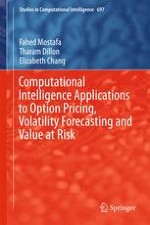2017 | Buch
Computational Intelligence Applications to Option Pricing, Volatility Forecasting and Value at Risk
verfasst von: Fahed Mostafa, Tharam Dillon, Elizabeth Chang
Verlag: Springer International Publishing
Buchreihe : Studies in Computational Intelligence
